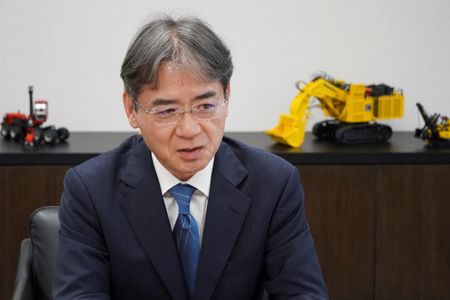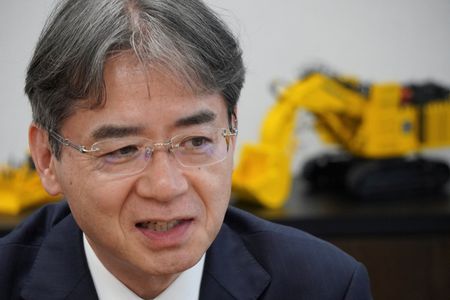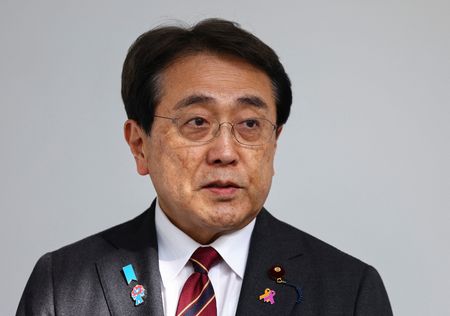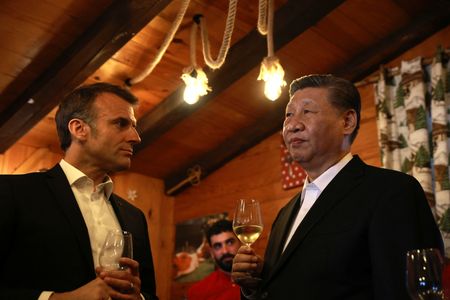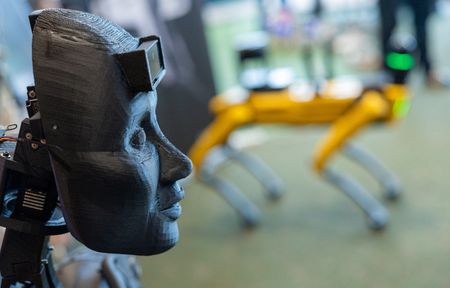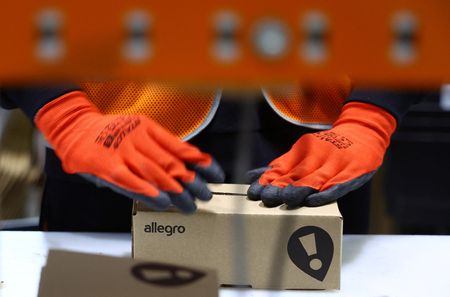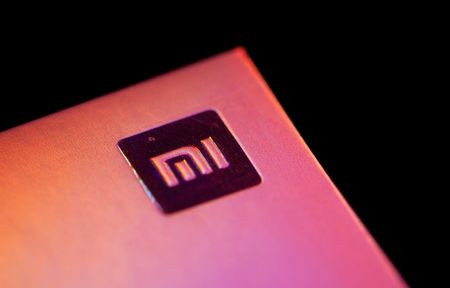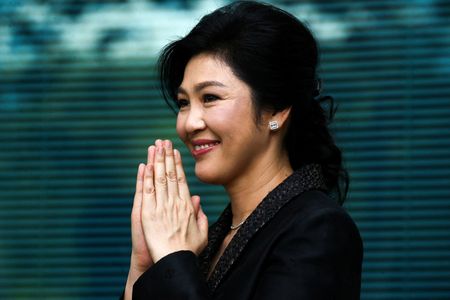By Kantaro Komiya and Miho Uranaka
TOKYO (Reuters) -Komatsu should see a nearly 20 billion yen ($140 million) mitigation in the impact of U.S. tariffs on its bottom line after the U.S.-China trade truce last week, the Japanese company’s CEO said, suggesting its outlook for lower profits may not be as bad as feared.
With more than one-quarter of Komatsu’s sales coming from North America, the reduction in the tariff impact – a roughly 20% easing in its forecast of a 94.3 billion yen hit from the tariffs – would have an outsized effect on its profit outlook.
In an interview with Reuters on Wednesday, Takuya Imayoshi, the head of the world’s second-largest construction and mining machinery maker, did not say it is officially revising its forecast last month of a 27% drop in current-year profit as a result of U.S. President Donald Trump’s tariffs.
But the 90-day pause of extra U.S. tariffs on Chinese imports may mitigate the impact on Komatsu, which buys Chinese steel for its American-made machines, he said.
“Countries’ retaliatory tariffs haven’t been like what we previously feared, so the negative impact on our performance appears limited,” he said.
The company forecast operating profit would be 478 billion yen for the business year to March 2026 because of the tariffs and a stronger yen, a far more conservative outlook than the consensus of analysts’ estimates compiled by LSEG for operating profit of 597.5 billion yen, down only 9% from the previous year.
Still, Imayoshi remained cautious on Komatsu’s outlook, saying “if tariff rates are adjusted with countries, the impact will likely settle within the previously made estimate.”
Despite the easing of Chinese tariffs, about half of Komatsu products sold in the U.S. are manufactured overseas and imported, such as construction machines from Japan, Brazil and Thailand, which remain subject to higher levies.
SUPPLY SHIFTS
Komatsu would consider shifts such as bypassing U.S. warehouses when exporting spare parts to Canada or Latin America, and rebasing the production of U.S.-bound items from China to Thailand in case the higher U.S. tariff rates on China at the end of the 90-day truce, Imayoshi said.
But “it’s never the case” that the tariffs can make manufacturing in the U.S. cost-competitive and drive Komatsu to ramp up U.S. production, he said, citing U.S. steel prices that are more than double those of China.
Overall, tariffs will have little impact on its competition with Caterpillar, the world’s biggest heavy equipment maker, and other rivals because they have similar global supply-chain structures, he said. However, Komatsu will watch how other companies pass on tariff costs, he added.
Caterpillar last month estimated additional tariff-related costs at between $250 million and $350 million in the April-June quarter. Caterpillar shares are down 4.8% year-to-date, while Komatsu is up 1.5%.
CHINESE RIVALS
Imayoshi, who led Komatsu’s China office for three years from 2021, said competition with Chinese construction machinery makers is becoming as demanding as with Caterpillar.
Chinese rivals Sany, XCMG and LiuGong are grabbing market share from Komatsu and other established brands in emerging markets with lower prices and excess capacity amid China’s property downturn, according to Chris Sleight, managing director at Off-Highway Research, a consultancy on the global construction equipment market.
Komatsu “still leads in durability and reliability, but they have largely caught up in offering decent performance at lower initial costs – in electrification, they are actually ahead,” Imayoshi said.
Electrification and solutions for software-defined and autonomous vehicles require technologies from outside Komatsu, he said, suggesting these fields are a consideration for an acquisition after its 2023 purchase of Detroit-based battery startup ABS.
The company has not made major purchases since buying U.S. mining equipment manufacturer Joy Global for $2.9 billion in 2017.
In a mid-term business plan announced last month, Komatsu added a free cash flow target of 1 trillion yen in the next three years.
“We plan to spend it while maintaining balance between investments and shareholder returns, and it can also be directed toward acquisitions if opportunities arise,” Imayoshi said.
“Financial structure-wise, we have considerable leeway.”
($1 = 143.3000 yen)
(Reporting by Kantaro Komiya and Miho Uranaka; Editing by Christian Schmollinger)

